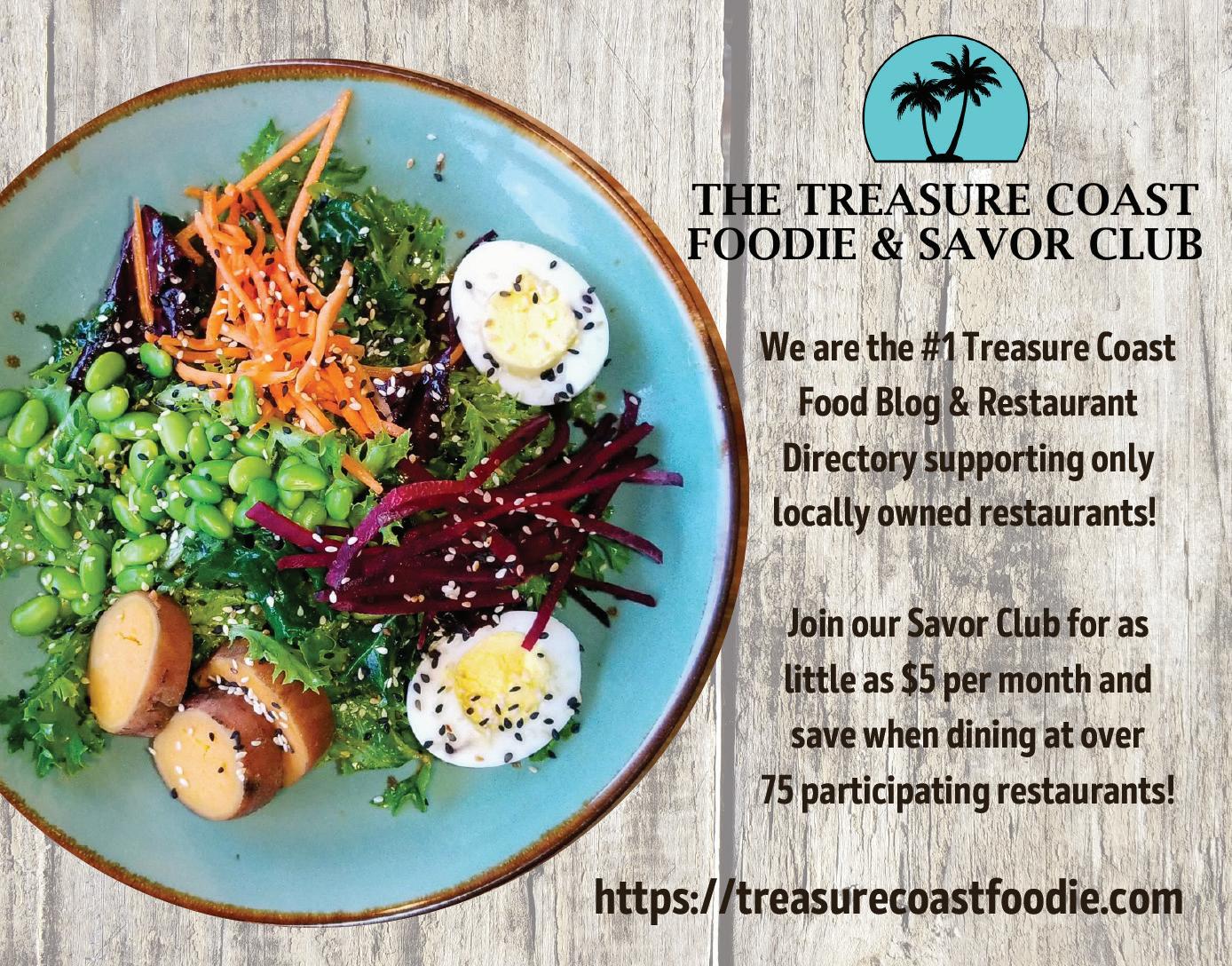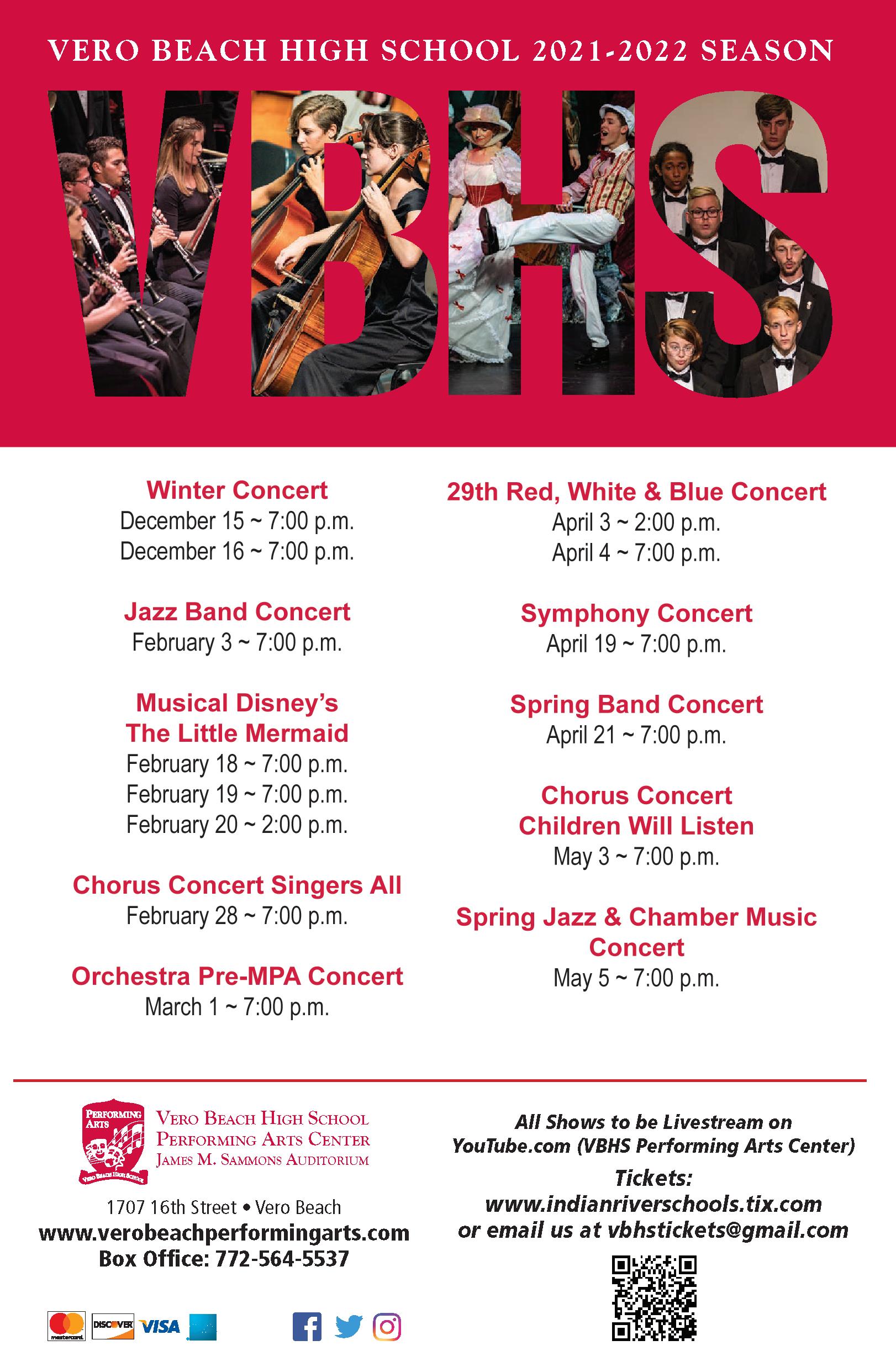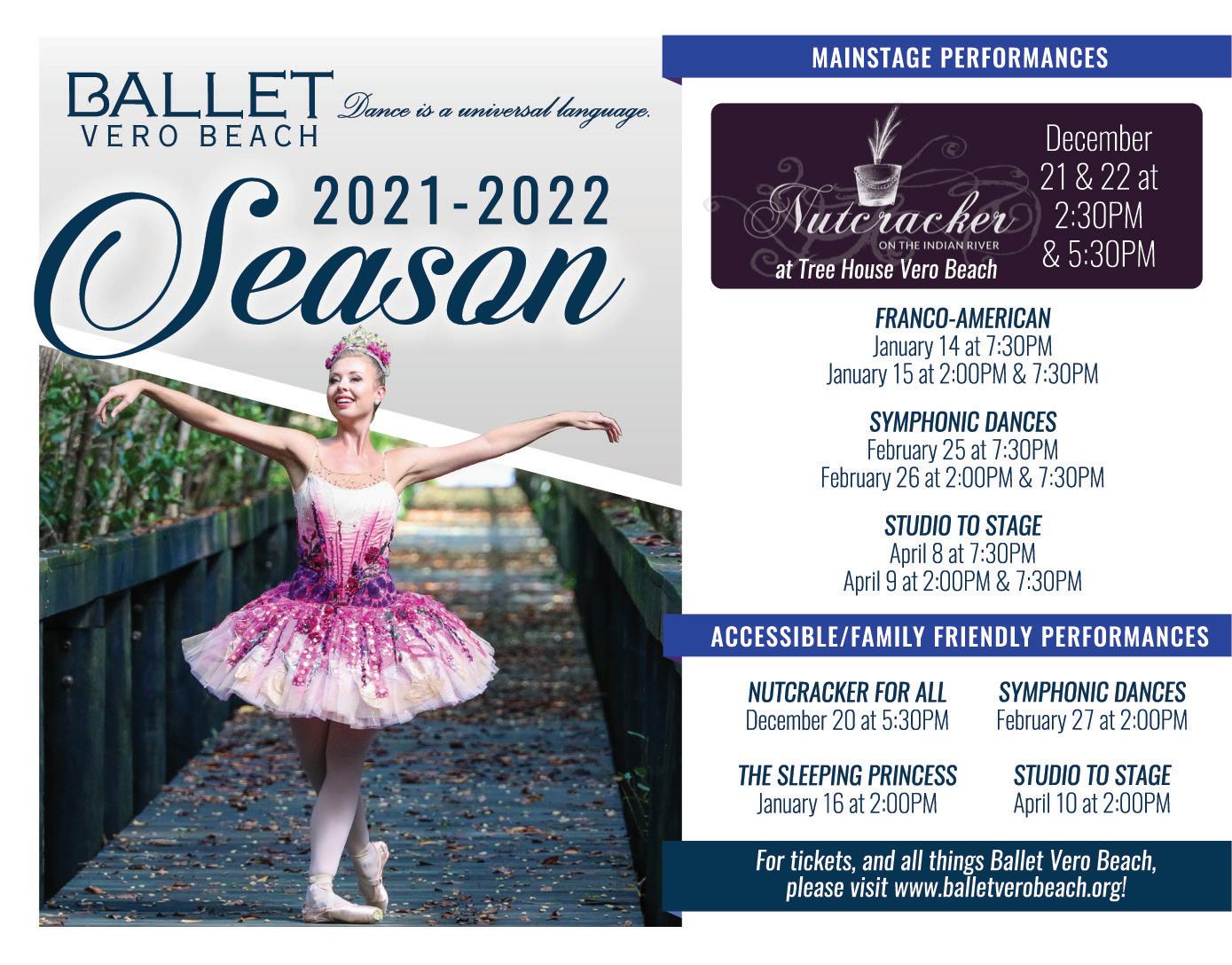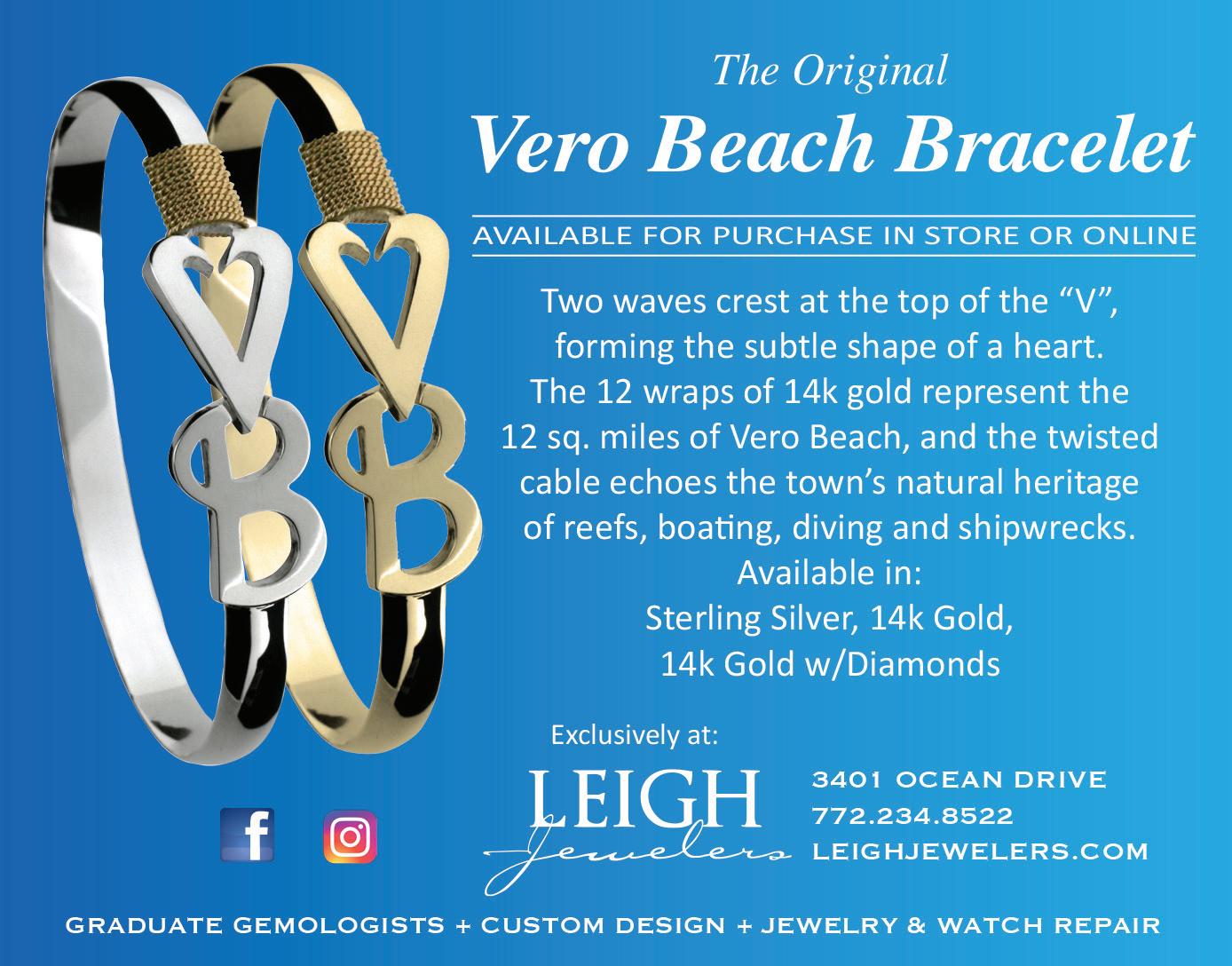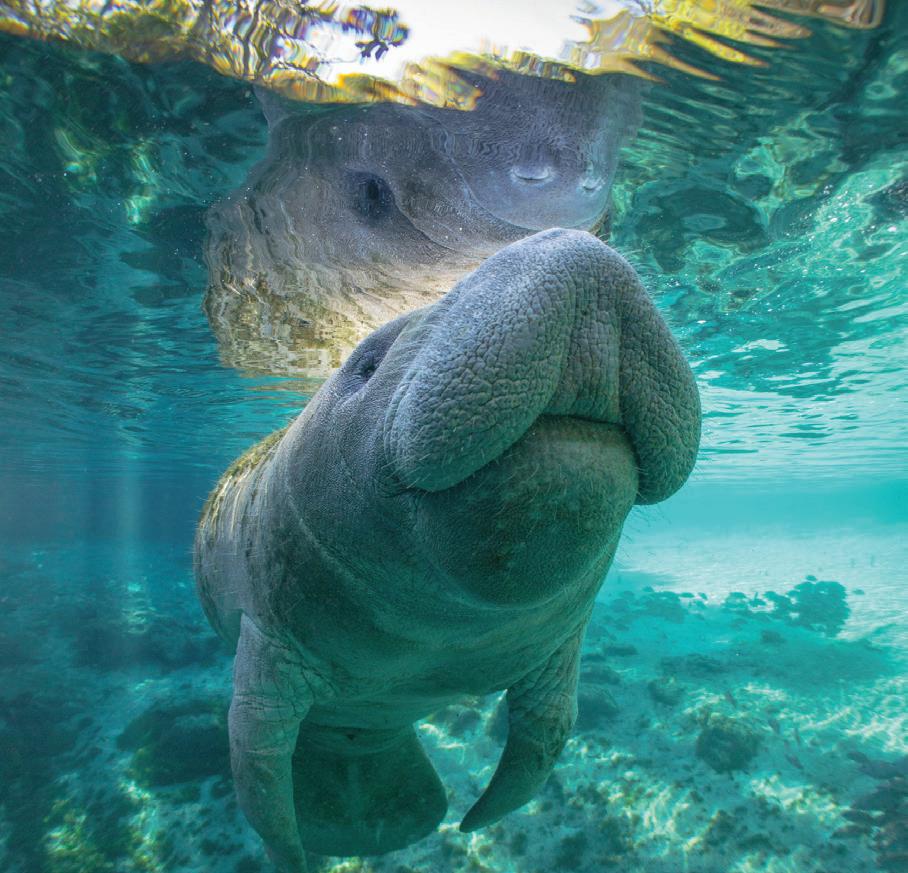
8 minute read
Saving Manatees
Manatees are the groundskeepers of their environments. Weighing in at an average of 800 to 1000 pounds, adults must consume 10 to 15 percent of their body weight daily in seagrass and other plants to maintain good health. They depend on seagrasses, and seagrasses depend on them. From a scant population of around 1200 in the 1990s to a fivefold increase by 2018, it looked like Florida’s West Indian Manatees were getting out of the woods. So much so that their status was downlisted in 2017 from endangered to threatened. Sounds like a conservation success story, and it was but then, 2021 happened.
In less than a year, over a thousand manatees have perished, the majority of them in the Indian River Lagoon, making 2021 the deadliest year on record for Florida’s manatees. What’s even more horrifying is the cause: starvation. As an indicator species that reliably reflects the condition of its habitat, this sobering mortality event indicates all is not well with the estuary. Over the last decade, the Indian River Lagoon has lost about 46,000 acres which is 58 percent of its seagrass, representing a massive decline caused mainly by harmful algal blooms caused by pollution. But none of this news. We’ve known for years that the lagoon has an algae problem. And we know the laundry list of culprits- from agriculture runoff, fertilizers, and pesticides to faulty septic systems, and worse, the causes have been covered ad nauseum. What matters now is action. The seagrass must be restored, not just for the health of manatees but for the very future of the estuary itself. These plants provide more than just food and habitat to thousands of species. Think of seagrass as the lungs of a body of water. One square meter of seagrass can generate 10 liters of oxygen a day through photosynthesis. It filters the water, absorbs 40 percent of nitrogen and phosphorus (algae causing nutrients), and can sequester 25 times more carbon than a terrestrial rainforest. So how do you restore seagrass in a body of water as large as the lagoon? Well, according to the latest project to be funded by the Manatee Observation & Education Center (MOEC) and the Treasure Coast Manatee Foundation, one acre at a time, one plant at a time. Earlier in 2021, the two organizations started a fundraiser to contract with a Florida company equipped to do exactly that. Sea & Shoreline Aquatic Restoration gained national attention for their success at Crystal River, another of Florida’s suffering waterways. In 2011 Crystal River was an environmental disaster. Algae known as Lyngbya had all but choked off most life, leaving several feet of decaying muck on the bottom, green slime on the surface, and a foul smell in the air. A group of locals got together and formed “Save Crystal River” to raise funds for restoration. Sea & Shoreline started on the project in 2014 with targeted completion in 2023 but the success so far has been remarkable. The river now lives up to its name and is proof positive that science and people working together can reset an ecosystem. This is good news for the Lagoon and MOEC’s project. The $65,000 they are raising will pay for an acre of new seagrass in Moore’s Creek in Fort Pierce, right in front of the Manatee Center. This project will connect two other restoration demo sites by the same company nearby. Biologist Ryan Brushwood of Sea & Shoreline will lead and is looking forward to getting started. He says it’s a great place for planting because of its proximity to the inlet. Sunlight is crucial for success so the clear ocean water flowing in will be beneficial. He also describes the area as subject to drastic changes in salinity from tides, storms, and a nearby freshwater tributary so they will optimize the chances by planting a variety of different grasses that can tolerate those changes. Brushwood has led a similar lagoon project near Merritt Island and is also leading two others, one at the Fort Pierce Inlet and another in the Banana River. “As a scientist, transforming an algae-dominated environment to a plantdominated environment is the holy grail,” he says of restoration projects like this and the one at Crystal River. Since there are no seeds for Florida’s seagrasses, the company, which maintains the world’s largest aquaculture nursery, grows and then transplants different varieties of seagrasses, mostly by hand.
Advertisement
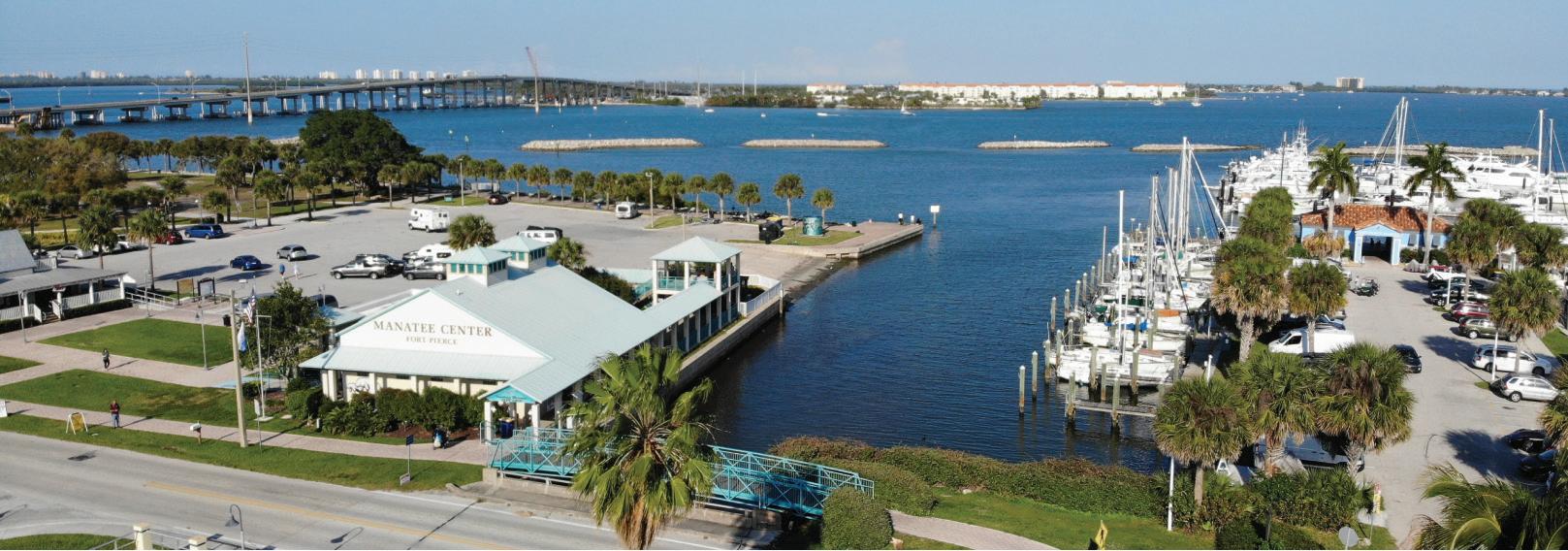
Moore's Creek in Fort Pierce (Photo courtesy of the Treasure Coast Manatee Foundation)
Photos courtesy Sea & Shoreline, LLC
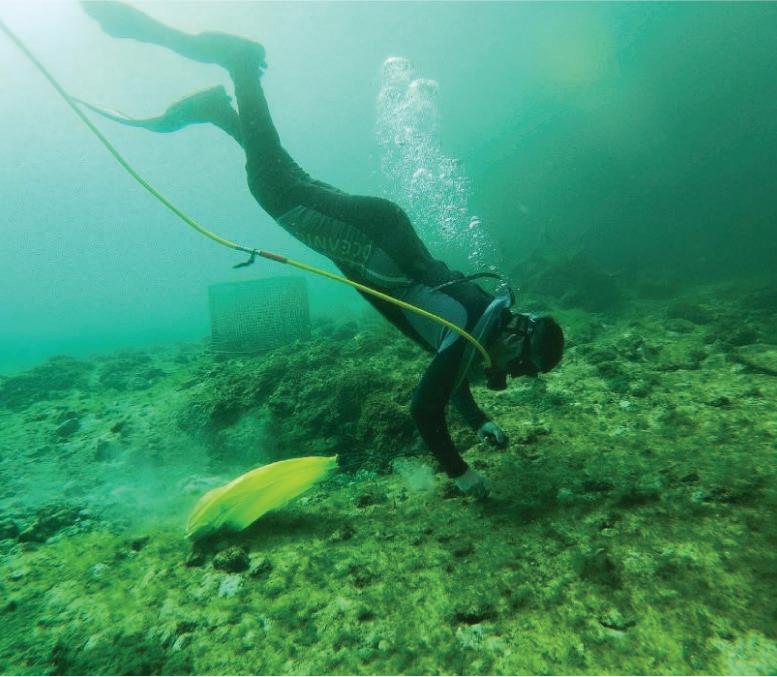
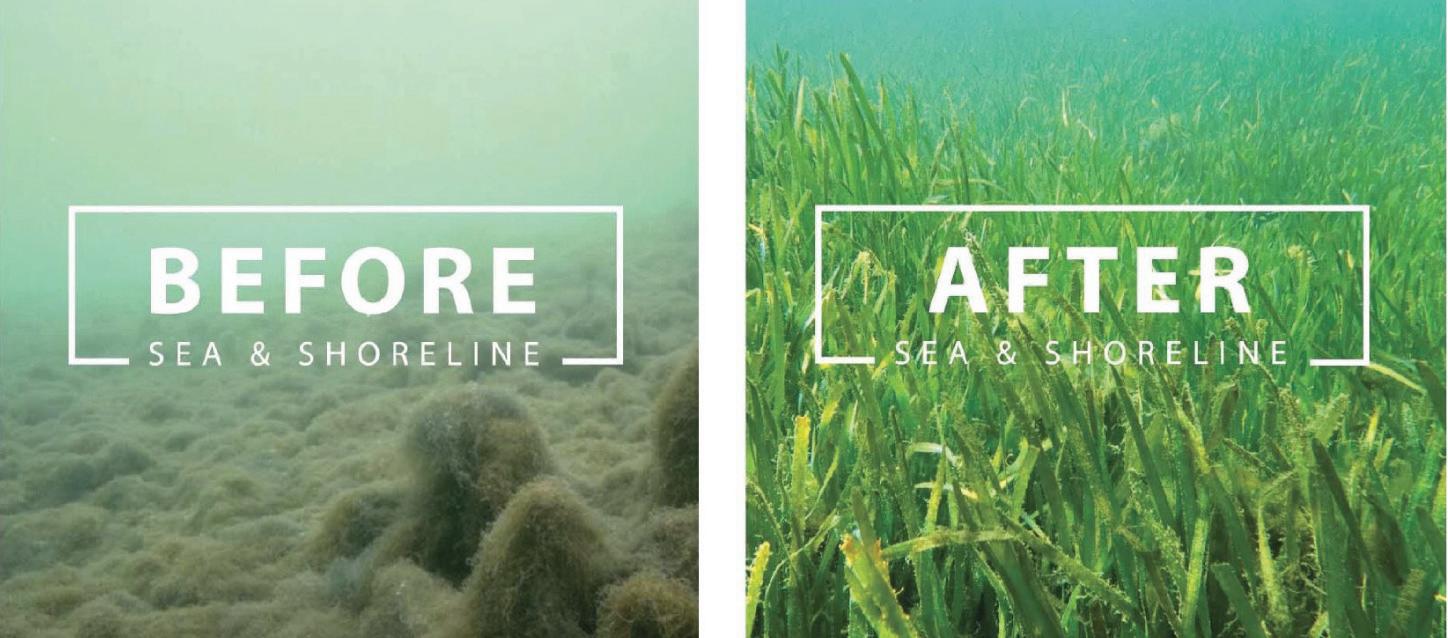
Assorted techniques will be used including 5,000 “mechanical planting units” which are pellets filled with a growth medium made from nursery-grown plant stock, 250 four-inch planting units contained in biodegradable peat pots, and 50 herbivory exclusion devices which are basically larger plants installed in cages that allow them to take root for up to 12 months without being grazed upon by larger marine herbivores. The Moore’s Creek project is scheduled to begin this spring and hopes are justifiably high. Pointing to the success of Crystal River, the company emphasizes that the environmental challenges in the Lagoon are overwhelming but not hopeless. You don’t need perfect water conditions to plant and cultivate healthy seagrass. Because Sea & Shoreline acclimates their plants to their intended environment, they’ve had a 95 percent success rate in an industry that averages only 45 percent. They commit three years to each project, carefully monitoring growth, measuring, and replacing any dead plants. In a healthy ecosystem, all forms of life have a purpose that is generally served flawlessly without human interference. But as human interference is a fact of life now more than ever, human intervention becomes necessary. Our Indian River Lagoon is one such case and this project is a reason to be hopeful that, with good science and meaningful stewardship, people will strive to solve more problems than they create. This lagoon and everything it supports is counting on it.
How You Can Help Donate to the Fundraiser
GoFundMe.com/f/SaveTheSeagrass Shop MOEC’s Gift Shop Vanishingmermaid.org
How to Help ManateeS Never approach or harass manatees. Do not feed manatees. If you spot a sick or injured manatee, report it right away to Florida Fish & Wildlife by calling 888-404-3922.
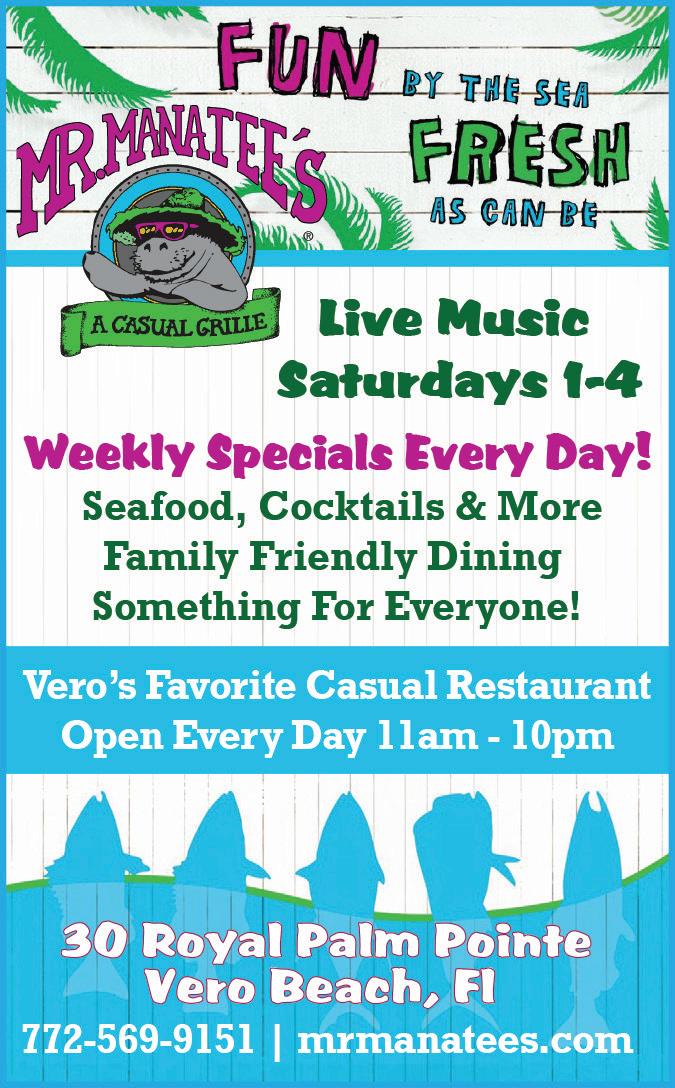

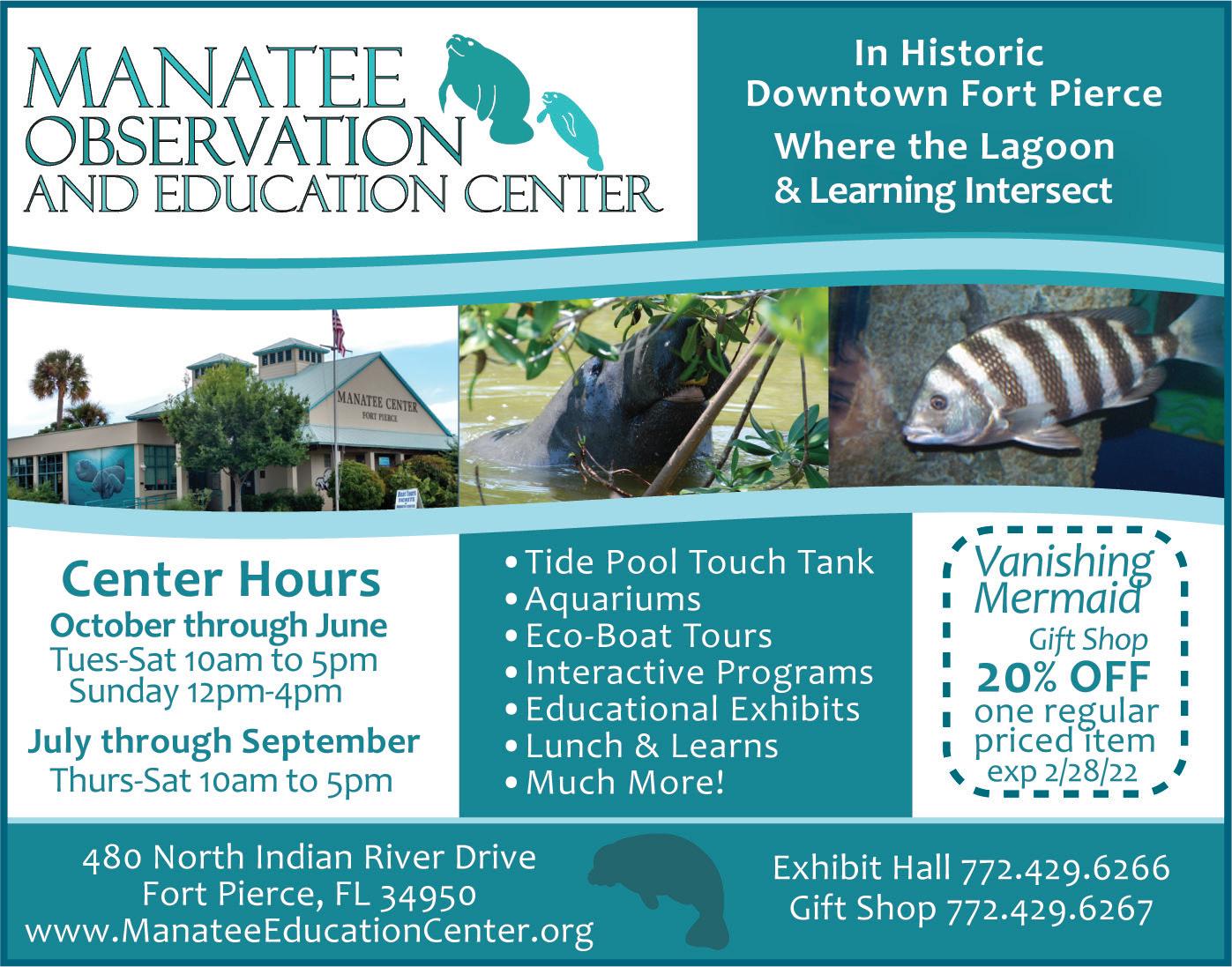

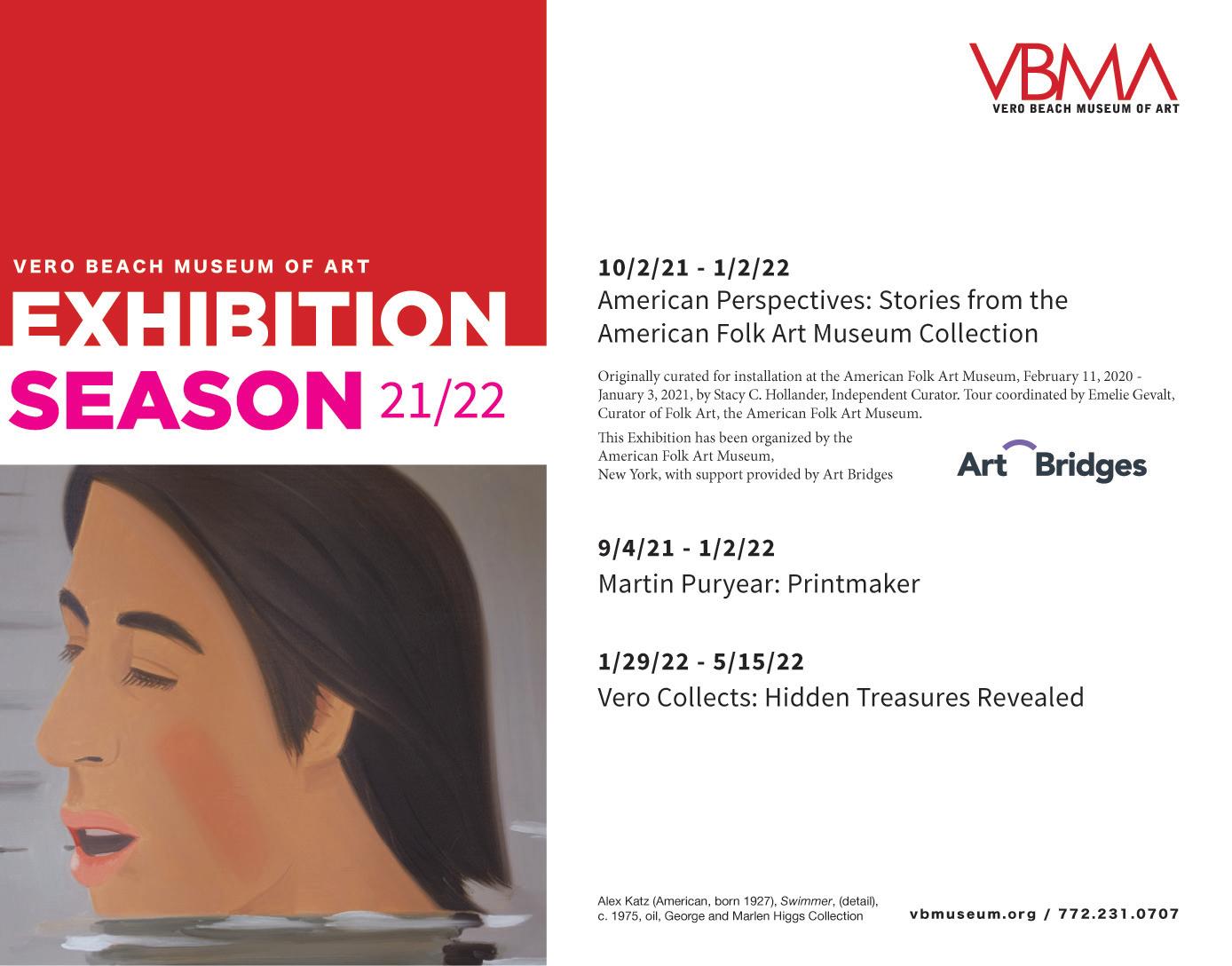
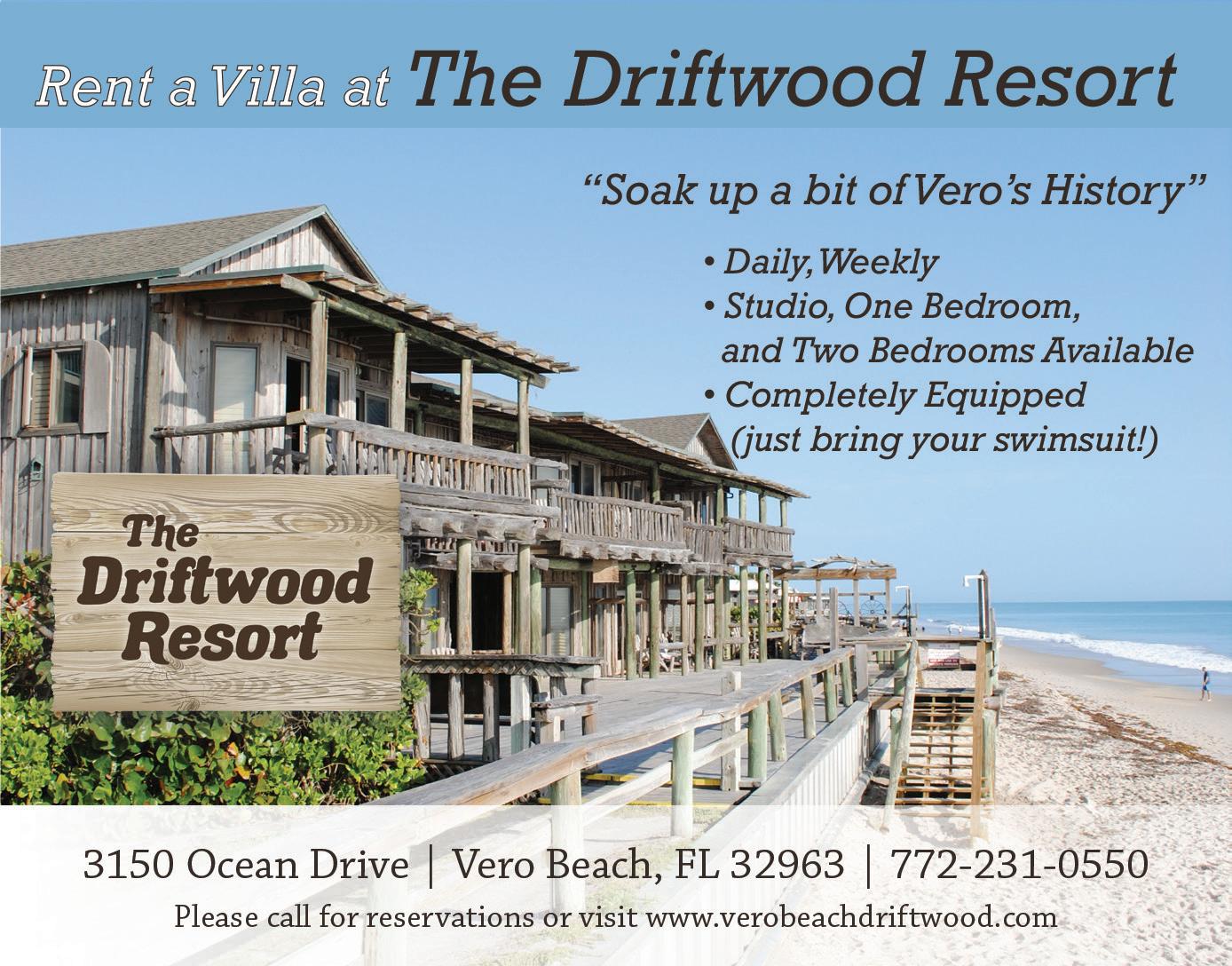

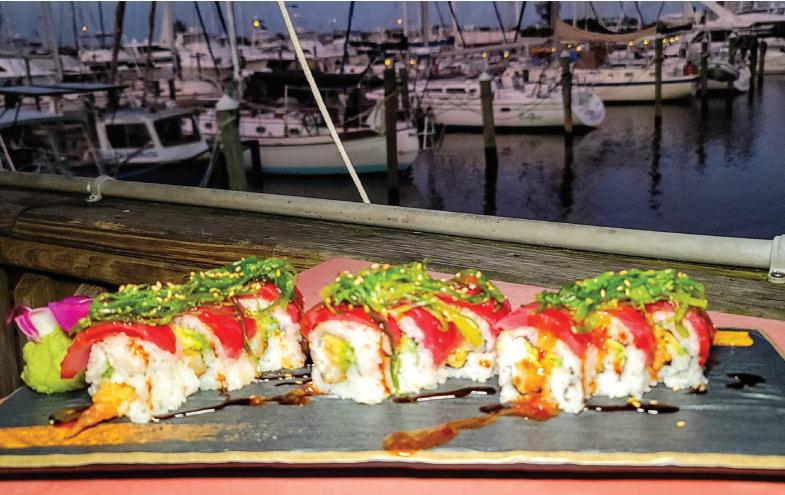

treaSure CoaSt Foodie review
By Thomas Miller, The Treasure Coast Foodie
Harbor Cove SeaFood bar grill & SuSHi reStaurant
Located in Fort Pierce at the far end of Safe Harbor Harbortown marina is Harbor Cove Bar & Grill. Most people stop by places they can easily see from the road, but this is one that you have to seek out, a locals place if you will. Even from the entrance, you might think you’ve made a wrong turn since you have to enter through a guarded gate to get in. Just pull up to the far left gate and let the guard know you are there to eat at the restaurant, and you can get right in. The parking lot is quite large, but can full up quickly on busy nights, so they do offer a free valet service (tips appreciated). Upon entry, the outdoor
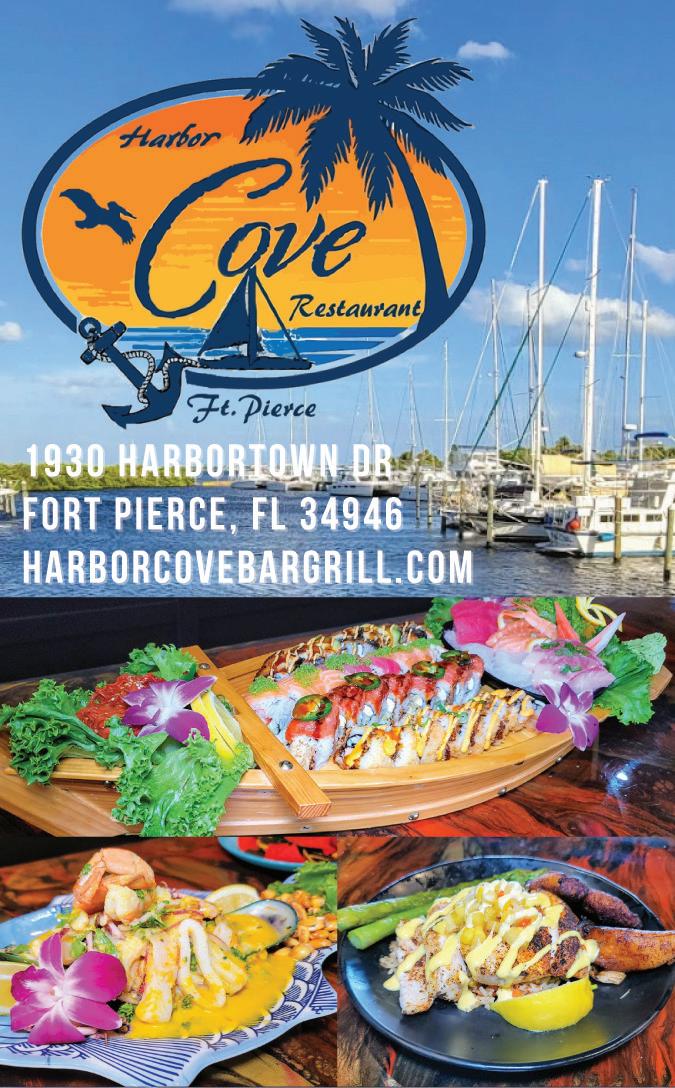
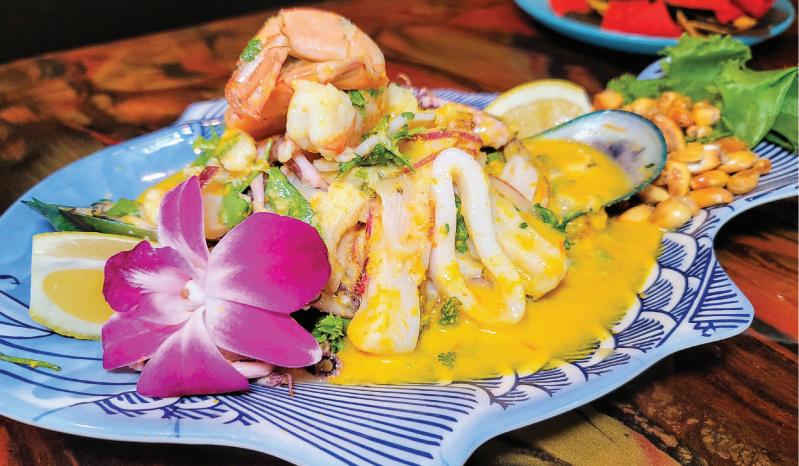
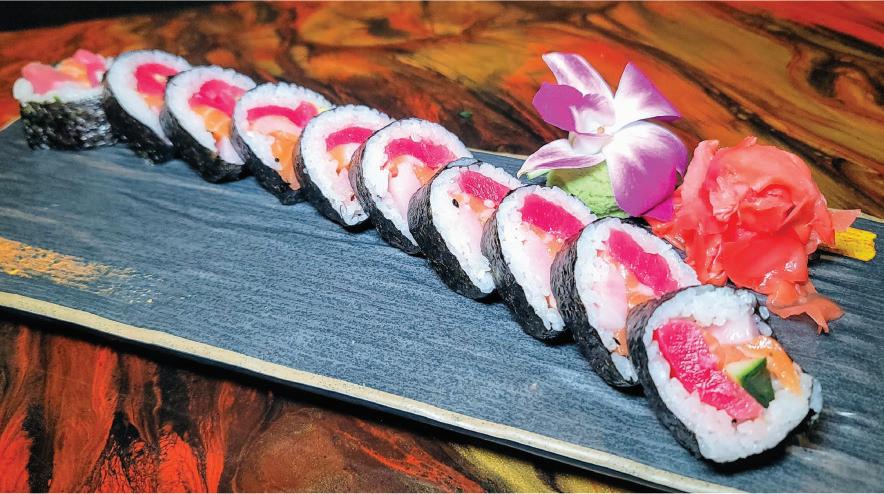
Seafood Ceviche- Fresh catch white fish, shrimp, New Zealand mussels, and calamari is tossed in Aji Amarillo, red onions, micro cilantro, and fried Peruvian corn (Cancha). covered dining room has a large, centrally located bar and 180 degree views of the water and marina. High top tables line the deck and they also have plenty of low top tables that are close enough to the water that you can still enjoy the view. With the recent addition of their brand new sushi & raw bar, I thought it was time to stop by again and check out the new menu! Although seating is limited at the Sushi & Raw Bar, you can order from that menu Bruschetta and have it delivered to your table anywhere in the restaurant. This is some of the best sushi I’ve had in a while. Everything was so fresh, full of flavor, and artfully presented!
Cannelloni
Oceans Trio- Seaweed outside roll with tuna, hamachi, yellowtail, cucumber, and avocado served with pickled ginger (Gari). Red Dragon Roll – Shrimp Tempura, cream cheese, avocado, and topped with spicy tuna, eel sauce, and a seaweed salad. (Left) Yacht Seafood Tower- one and a half dozen oysters, 8 peel & eat shrimp, 10 New Zealand mussels, 1 snow crab cluster, smoked fish dip, and 9 pieces of chef’s choice. Harbor Cove Bar & Grill is open Sunday through Thursday, 11 AM to 9 PM, and Friday & Saturday, 11 AM to 10PM.
